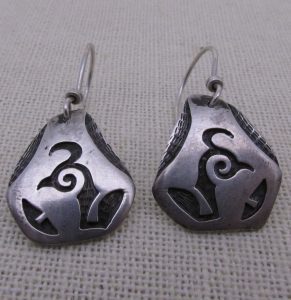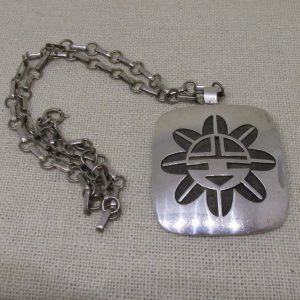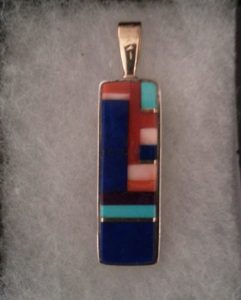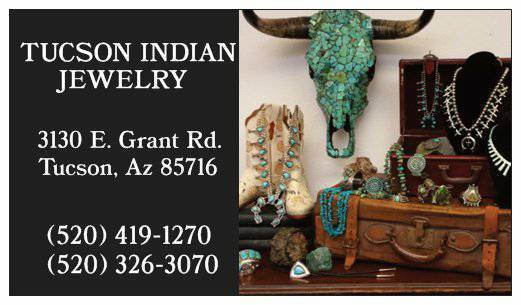Sikyata becomes the first Hopi silversmith in 1898. People recognize Hopi silversmiths for their overlay technique. The scarcity of silver keeps shell and stone as the primary jewelry components of the Hopi . The use of these materials lasts through the 1930’s and 40’s. At that time, very few Hopi knew how to work silver.
 In 1946, Willard Beatty, director of the Indian Education for the US Department of the Interior, sees an exhibit of Hopi art. He decides to develop a silversmithing program for Hopi veterans of World War II. In addition, the veterans learn cutting, grinding and polishing. They also learn die-stamping and sand-casting of stylize Hopi designs. The students then teach fellow tribesmen silversmithing. Consequently, they use stylize traditional designs. Incidently, these designs come from the decorative patterns of old pottery and baskets.
In 1946, Willard Beatty, director of the Indian Education for the US Department of the Interior, sees an exhibit of Hopi art. He decides to develop a silversmithing program for Hopi veterans of World War II. In addition, the veterans learn cutting, grinding and polishing. They also learn die-stamping and sand-casting of stylize Hopi designs. The students then teach fellow tribesmen silversmithing. Consequently, they use stylize traditional designs. Incidently, these designs come from the decorative patterns of old pottery and baskets.
The Museum of Northern Arizona encourages the early silversmiths to develop their own style. This style is very distinct from neighboring tribes. Victor Coochwytewa is one of the most innovative jewelers. Subsequently, he receives credit with adapting the overlay technique to Hopi jewelry. Other credits go to Paul Saufkie and Fred Kabotie. These early students establish The Hopi Silvercraft Cooperative Guild. Saufkie’s son Lawrence continues making silver overlay jewelry for more than 60 years.
 Overlay involves two layers of silver sheets. The silversmith etches a design into a top layer. The silversmith solders this layer onto a second solid sheet. In addition, the background is made dark through oxidation and stamped with “dashes”. Finally, the silversmith polishes the top layer. The un-oxidized top layer is made into a cutout design. Consequently, this allows the dark bottom layer to show through. This technique is still in use today in silver jewelry.
Overlay involves two layers of silver sheets. The silversmith etches a design into a top layer. The silversmith solders this layer onto a second solid sheet. In addition, the background is made dark through oxidation and stamped with “dashes”. Finally, the silversmith polishes the top layer. The un-oxidized top layer is made into a cutout design. Consequently, this allows the dark bottom layer to show through. This technique is still in use today in silver jewelry.
 Hopi jeweler Charles Loloma (1921–1991) transforms mid-20th century Native American jewelry. He wins major awards. Most notably, his work incorporates new materials and techniques. Loloma is the first to use gold and to inlay multiple stones within a piece of jewelry. This completely changes the look of Hopi jewelry.
Hopi jeweler Charles Loloma (1921–1991) transforms mid-20th century Native American jewelry. He wins major awards. Most notably, his work incorporates new materials and techniques. Loloma is the first to use gold and to inlay multiple stones within a piece of jewelry. This completely changes the look of Hopi jewelry.
Tucson Indian Jewelry offers a HUGE selection of Hopi Jewelry!
Portions of this information comes from Wikipedia.org ©
To learn more about the Hopi people, please click HERE!
Tucson Indian Jewelry 1990 – 2025 © Schannep Ventures L.L.C. ALL RIGHTS RESERVED
